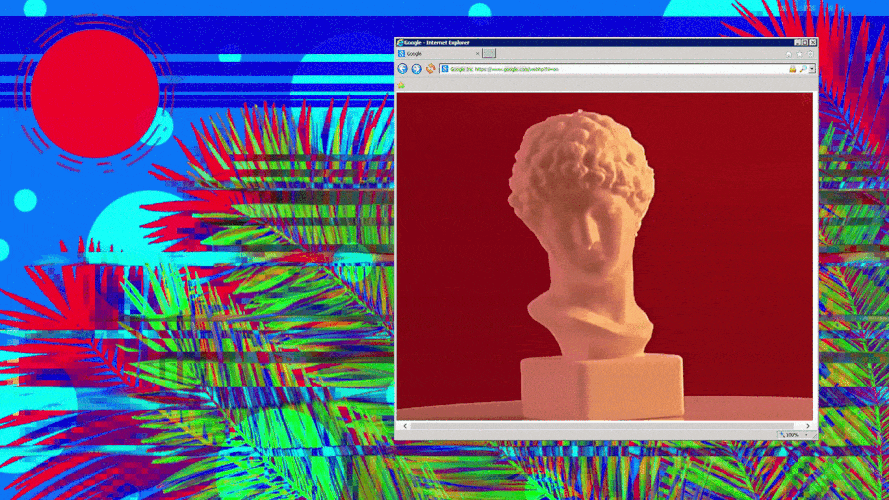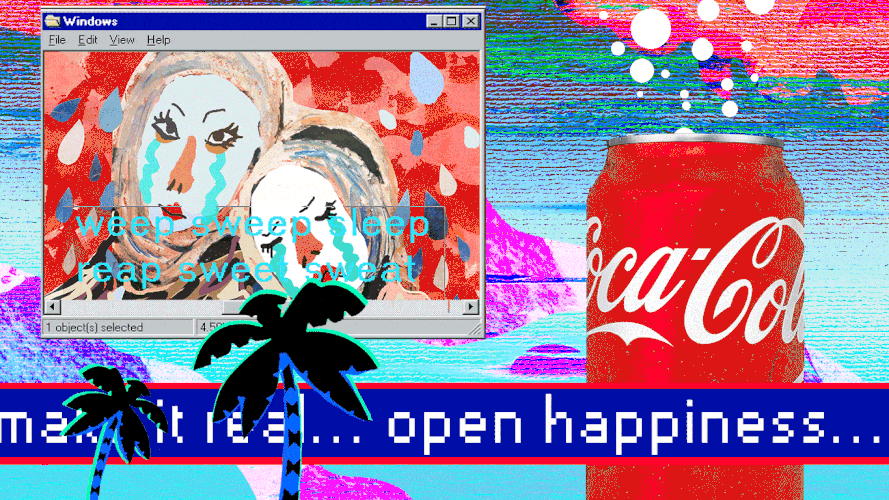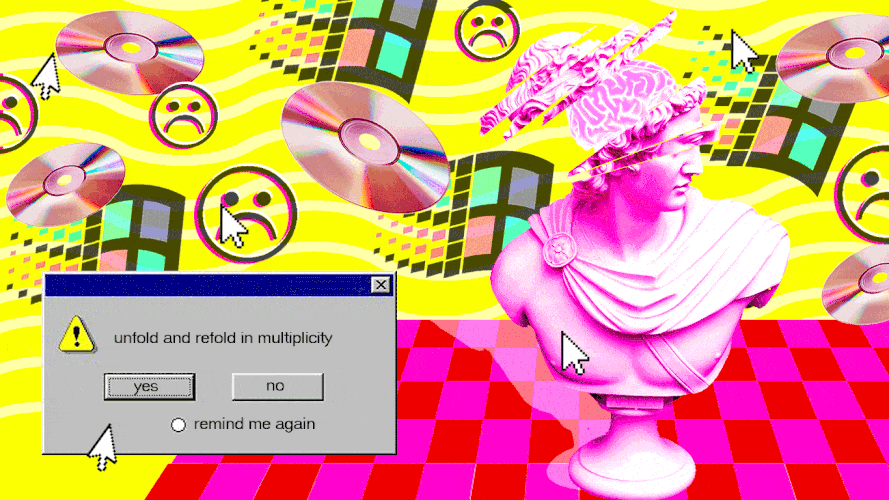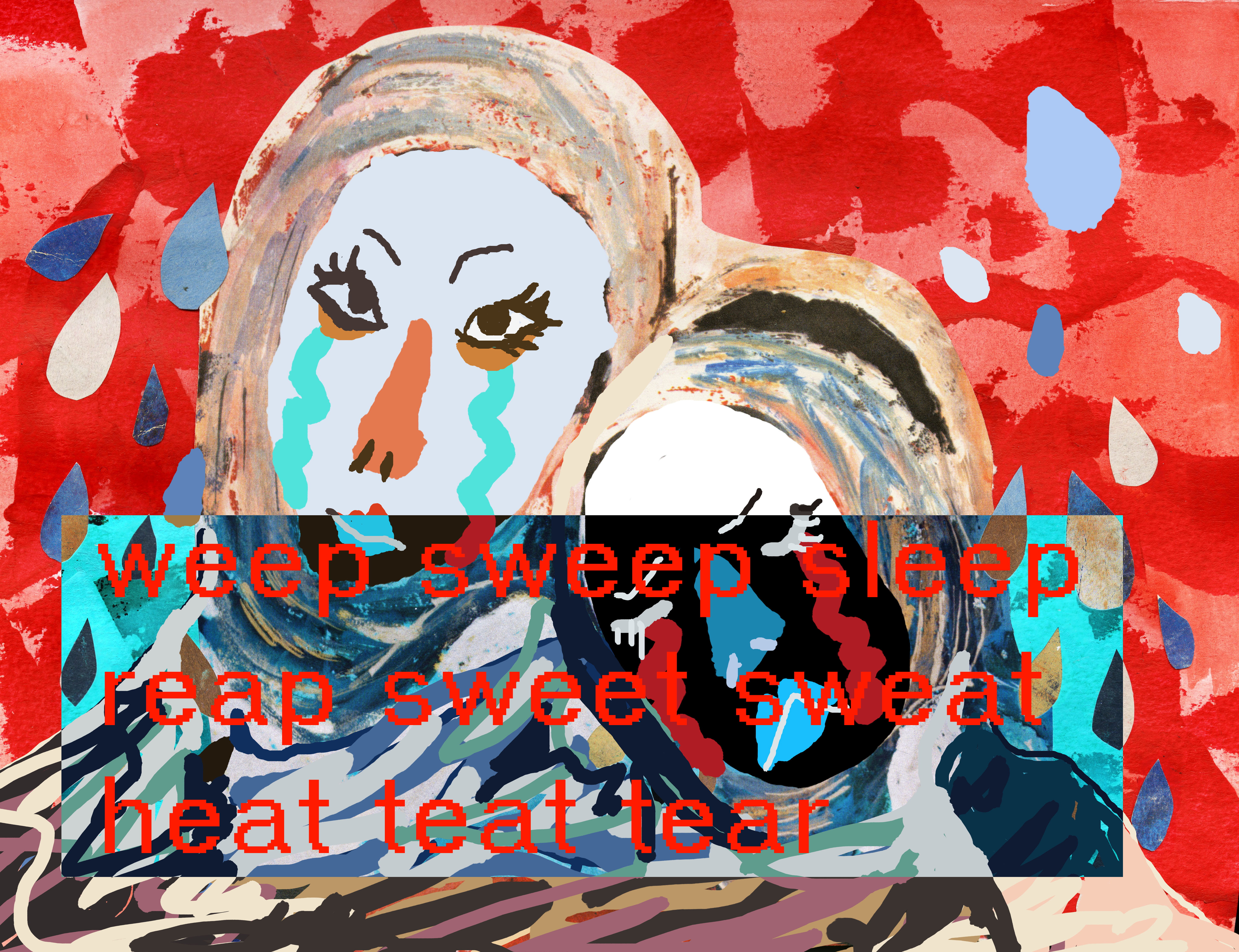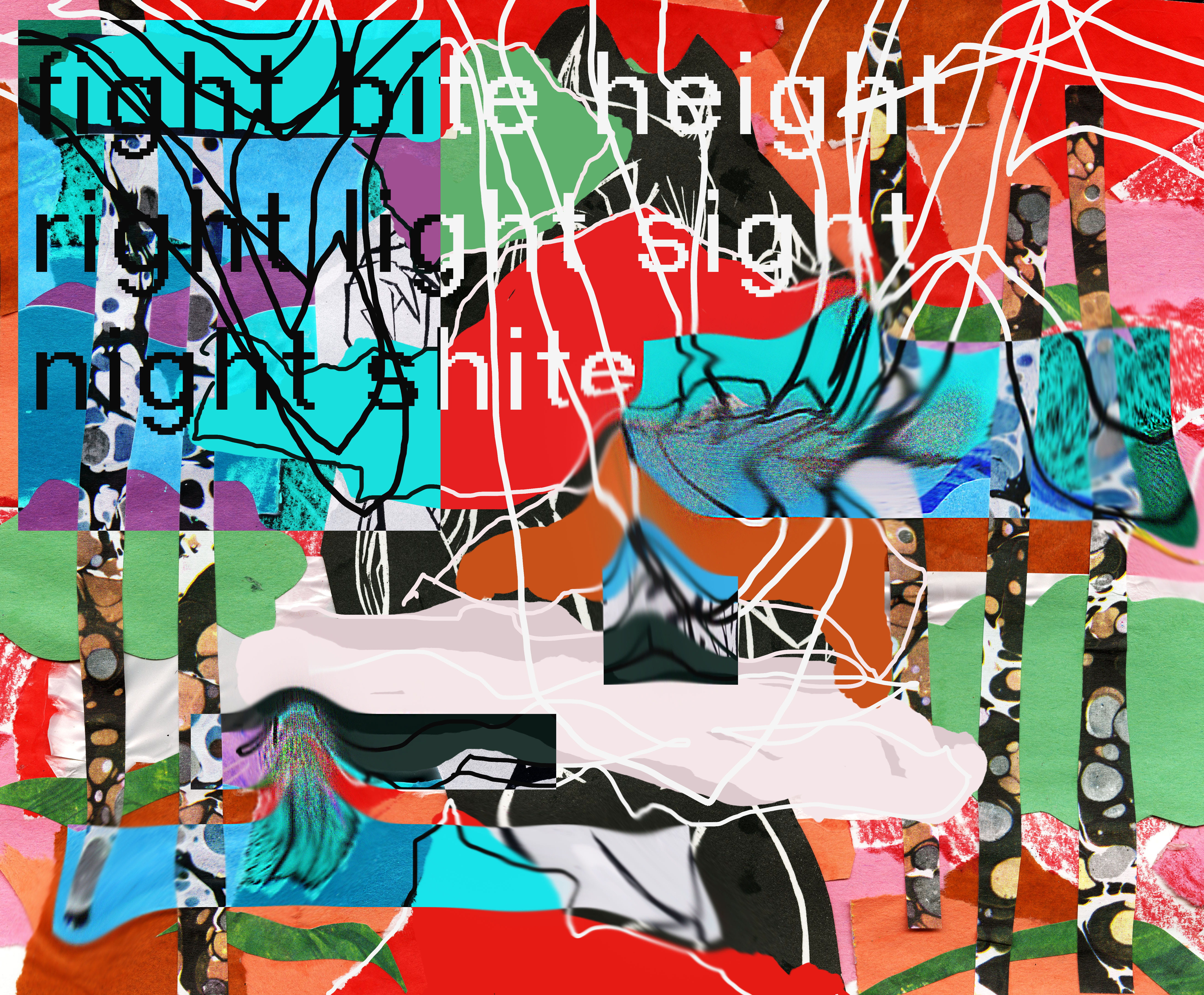Vaporsquare (2018)
Installation with projection
Variable Dimensions
Installation where viewers control the music and sound playing by choosing different combinations of colored squares.
Copy/Paste (2018)
Mixed Media
8.5” x 11”
Series of collages created from childrens books and digitally manipulated counterparts.
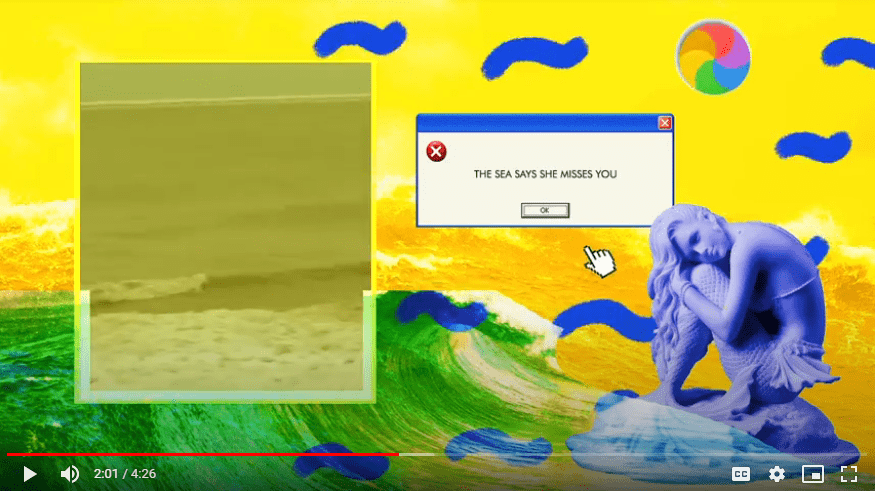
Six Degrees of Freedom (2019)
Video
Dimensions Variable
Video Link
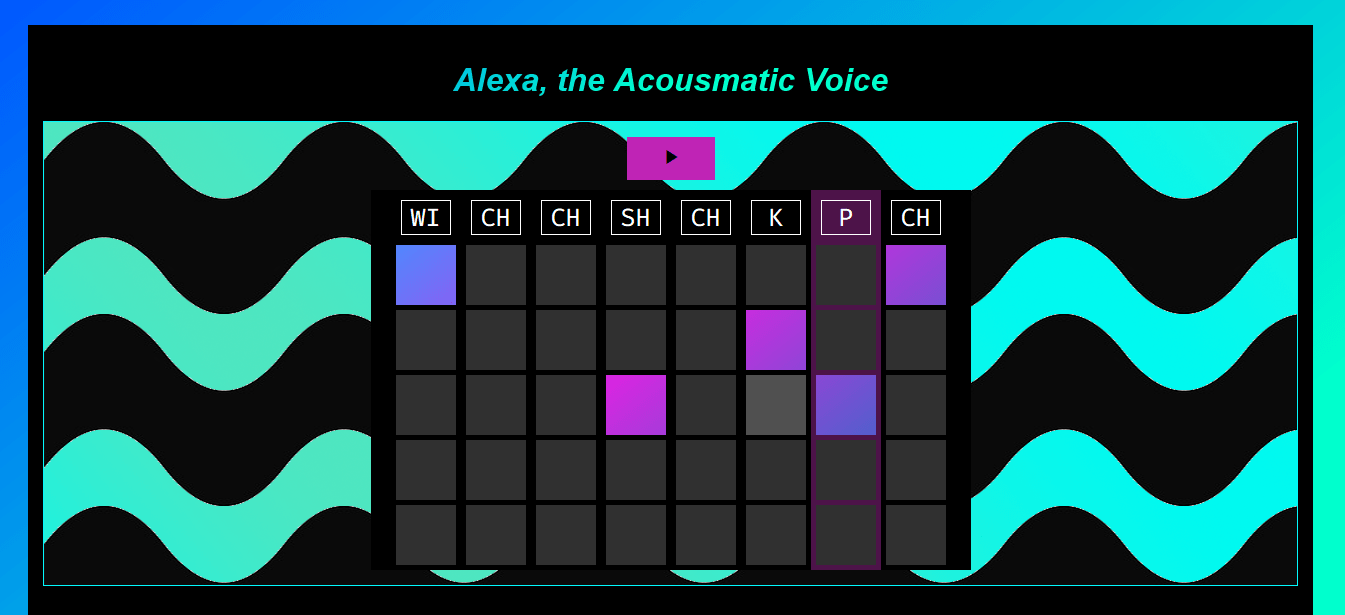
Alexa, the Acousmatic Voice (a sound sequencer) (2020)
Web Application
Dimensions Variable
https://acousmatic-alexa.glitch.me
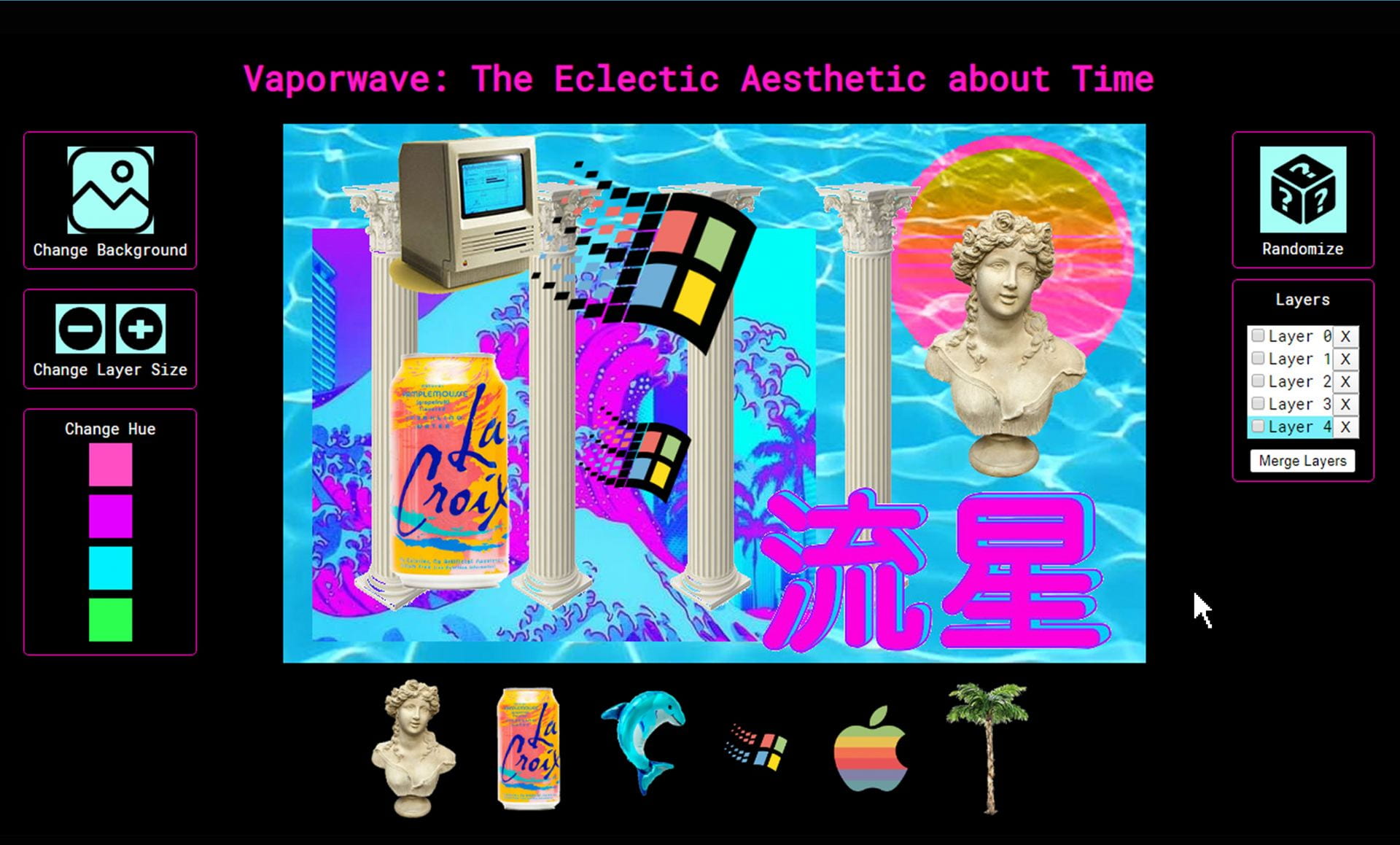
Vaporwave: The Eclectic Aesthetic (an image generator) (2020)
Web Application
Dimensions Variable
https://vaporwave-generator.glitch.me
Artist Statement
However, the viewer’s agency is constrained by the framework that I set in my code. They are limited to the distinct actions that I forecast, implement, and codify in my work. The result is an artwork that faces internally towards me, the creator: the art reveals not your actions, but my decisions. In the interplay between user and developer action, I explore the ideas of freedom and control within digital spaces. This exploration takes the form of choices that players make within my video games, digital objects that users create in my websites, and interactions viewers enact in my installations.
My relationship to technology as a developer complicates my position as an artist. My artwork often critiques how current software systems reinforce capitalistic structures through mechanisms hidden from users. Still, I am complicit in participating in these systems both as an engineer and as a user. Within my problematic position, I seek to reconcile developer, user, artist, and viewer so that these roles are not polarized extremes of active/passive or complicit/exploited. Rather, I view all roles as potential modes of resistance.
Through this lens, my art explores the fluidity in using the Internet as both a tool for control and for freedom. I create programs about repurposing technology for resistance, ranging from examinations of internet aesthetics that critique capitalism to games about social connection. My code is openly accessible for anyone to view and is often accompanied by explanatory theoretical text. This transparency counters how programs often exploit users with concealed algorithms. Through interactivity, users are allowed to question and play with the concepts I introduce. As an artist, developer, user, and viewer, I aim to construct the technology that exposes utopic possibilities. I do this with the knowledge that my code constrains viewers/users to my utopic possibilities.
I want to examine technology through the medium of computation. Just as I create art about user interaction that faces internally towards me, I want to create programmed works about the vast, technological world that reflexively gazes into itself.

